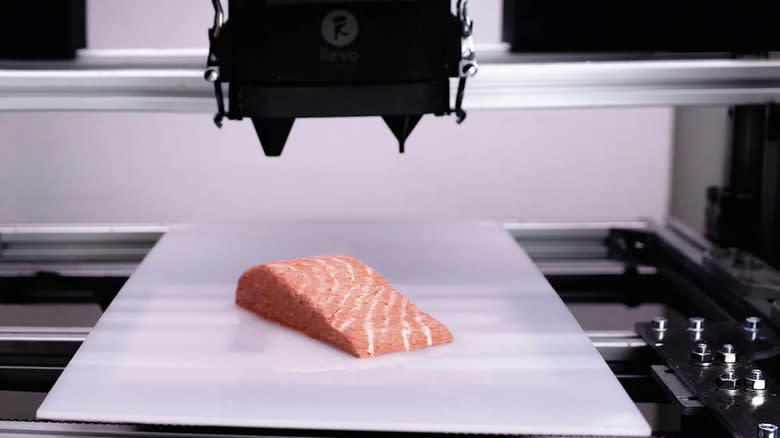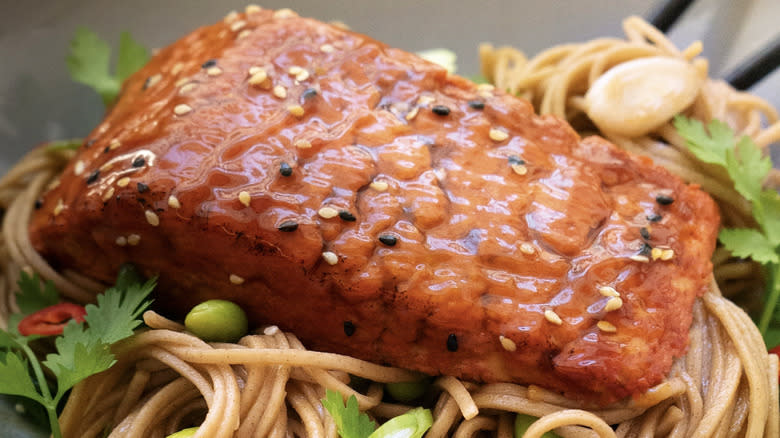The Age Of Eating Plant-Based 3D-Printed Salmon Is Upon Us

It's only been a few years since plant-based brands Beyond Meat and Impossible Foods made their international supermarket debut, impressing vegans and other plant-based shoppers with their products' uncanny likeness to meat. Now, vegans and flexitarians have an unexpected reason to visit Austria, where the world's first 3D-printed, plant-based salmon is available in grocery stores.
The technologically advanced fish dupe is the brainchild of Revo Foods, a startup that peddles plant-based seafood in an effort to reduce overfishing and "[relieve] pressure on the marine ecosystem," per its website. Its products include vegan smoked salmon, gravlax, and fish spreads, but its newest 3D-printed offering, "THE FILLET — Inspired By Salmon," is the first of its kind.
"With the milestone of industrial-scale 3D food printing, we are entering a creative food revolution," Revo CEO Robin Simsa said in a statement. Here's everything you need to know about the salmon that isn't actually salmon.
Read more: What To Do With Leftover Salmon
All The Health Benefits Of Salmon, Without The Salmon

Those concerned about losing the nutritional benefits of salmon with its plant-based replacement will be glad to know that Revo Foods' 3D-printed creation contains a laundry list of vitamins, protein, and omega-3 fatty acids. The fillet is made with fungi-based soy microprotein, which is meant to mimic the texture of actual fish.
The fillet, which costs €6,99 a pop and is already sold out online, can be cooked like real salmon in an oven, a pan, or an air fryer. According to the company, the fillet is significantly more sustainable than real salmon, generating 77-86% less CO2 and using 95% less water.
Revo Foods isn't the first brand to introduce such innovations. 3D-printed meat cuts from the Israeli startup Redefine Meat are sweeping European butcher shops and restaurants. And just when we thought we'd seen it all, a food lab at Columbia University turned out 3D-printed cheesecake. The future has arrived, and it's made of edible filaments.
Read the original article on Daily Meal.